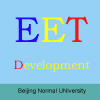-
Web accessibility
普通类 -
- 支持
- 批判
- 提问
- 解释
- 补充
- 删除
-
-
Designing accessible web pages
CREATING WEB PAGES ACCESSIBLE TO ALL learners is critical to web-delivered instruction. Individuals with physical disabilities often cannot access instruction posted to the web. The Individuals with Disabilities in Education Act and Section 508 of the Rehabilitation Act require that educational ensure access for learners with disabilities.
-
How are learners with disabilities impacted?
Visual Impairments: Blind users and those with limited vision access web pages using screen readers that read the text and the content of certain HTML tags on the web page. Content in images, while accessible to sighted users, is unavailable when accessed with a screen reader. Image maps create additional problems because they are designed to be navigated using a mouse, which blind users do not use. These are only two examples of ways in which visually impaired users may be impacted by web site design
Auditory Deficits: Although most of us would consider the web primarily a visual medium increasingly it is an auditory one as well. Deaf users have no access to the audio track of video clips, nor can they extract the content from audio recordings such as lectures or music.
Mobility impairments: Web pages are designed to be navigated using a mouse. Users with mobility impairment often use alternative pointing devices such as head pointers which they may not be able to control with as much precision as a non-disabled individual controls a mouse. In order to click on a link the user must have sufficient dexterity to position the pointer over the link. Graphical navigation systems need to be designed with large target areas so that users with limited dexterity or those using alternative pointing devices.-
Guidelines for accessibility
Alt text - All images and animations should use the alt attribute to provide alternative text that will be read by screen readers.Sample HTML:
<img src="image.gif" alt="picture of beaver
lodge" height="150" width="200">
Accessible image maps - Use client-side image maps by defining a map element with alt text for hot spots. Provide alternative text links.Sample HTML:
<img src="media/pond.jpg" width="800" height="600" border="0" usemap="#beaver">
<!-- alternative text links
<a href="lodge.htm">Beaver Lodges</a> | <a href="dining.htm">Beaver Foods</a> | <a href="family.htm">Beaver Reproduction</a>
<map name="beaver">
<area shape="rect" coords="565,187,739,219" href="lodge.htm">
<area shape="rect" coords="566,220,736,249" href="dining.htm">
<area shape="rect" coords="566,251,741,281" href="family.htm">
</map>Media captioning - Provide captions or transcripts for audio and video elements. For images where the alt text attribute provides insufficient description provide a separate link in the form of a "d" linked to a detailed description of the element. (See media above for examples.)
Accessible links - Use text that describes the nature of the document to which the link leads. The link text should also make sense when read out of context.
Accessible pages with frames - When creating pages using frames always provide content in the noframes element.Sample HTML:
<frameset ...
</frameset>
<body>
<noframes>
Put alternative content for page without frames here.
</noframes>
</body>Consistent page structure - Use consistent page layout on all pages so users can anticipate where they will find navigation elements. List links to other pages in the same order on all pages.
Accessible tables - Construct tables that make sense when read line by line.
Alternative Content - When using scripts or or media that cannot be made accessible provide an alternate form of the content.Authoring Tools
If using a web authoring tool such as Dreamweaver, FrontPage, or GoLive you can provide accessibility features without directly coding HTML. The properties panel for a media element will provide fields to enter alt text and most editors have provisions for entering no frames content.
Some editors also have accessibility checkers built-in or as add-ins. These checkers will examine the page for access problems and prompt you to add the necessary content.-
More Information
About 508. (n.d.) Washington, DC. FirstGov. Retrieved August 9, 2002 from: http://www.section508.gov/index.cfm?FuseAction=Content&ID=3
Foley, A.and Regan, B. (2002). Web Design for Accessibility: Policies and Practice. Educational Technology Review. 10(1). Retrieved August 1, 2002 from: http://www.aace.org/pubs/etr/foley.cfm
National Center for Accessible Media. (n.d.). Boston, MA: Media Access Group, WGBH. Retrieved August 9, 2002 from: http://ncam.wgbh.org/ - This site provides information for creating accessible media.
Paciello, M. G. (1999). Making Web Sites Accessible to People with Disabilities. Indianapolis: IDG Books.
Wesley, T., Reeves, C. and Evenepoel, F. (1997). Harmony Guidelines for Accessible WWW. Belgium: Technology Initiative for Disabled and Elderly People Programme. Retrieved August 1, 2002 from: http://www.esat.kuleuven.ac.be/teo/docarch/
projecten/harmony/guidelines/guidelines.htm - This site provides basic guidelines for creating accessible web pages.-
Author
Lynn Cooke, Graduate Student -
-
- 标签:
- accessible
- pages
- access
- web
- accessibility
- 2002
- alternative
- text
- media
- href
- content
-
加入的知识群:



学习元评论 (0条)
聪明如你,不妨在这 发表你的看法与心得 ~